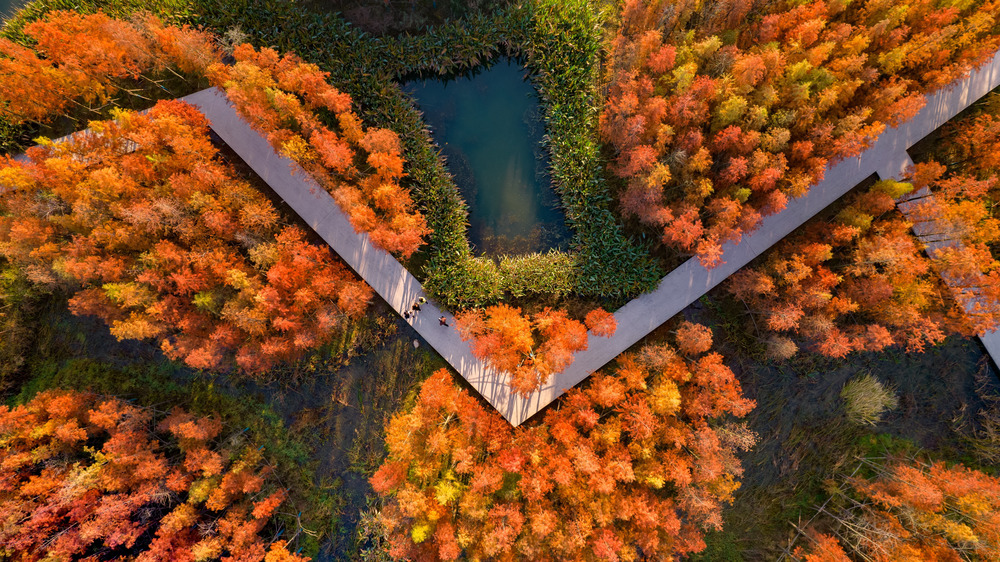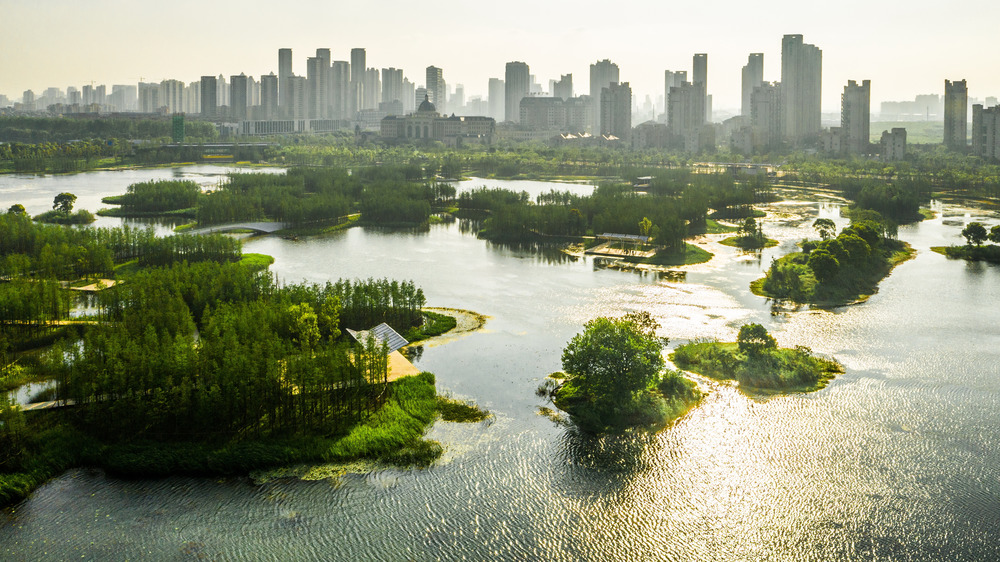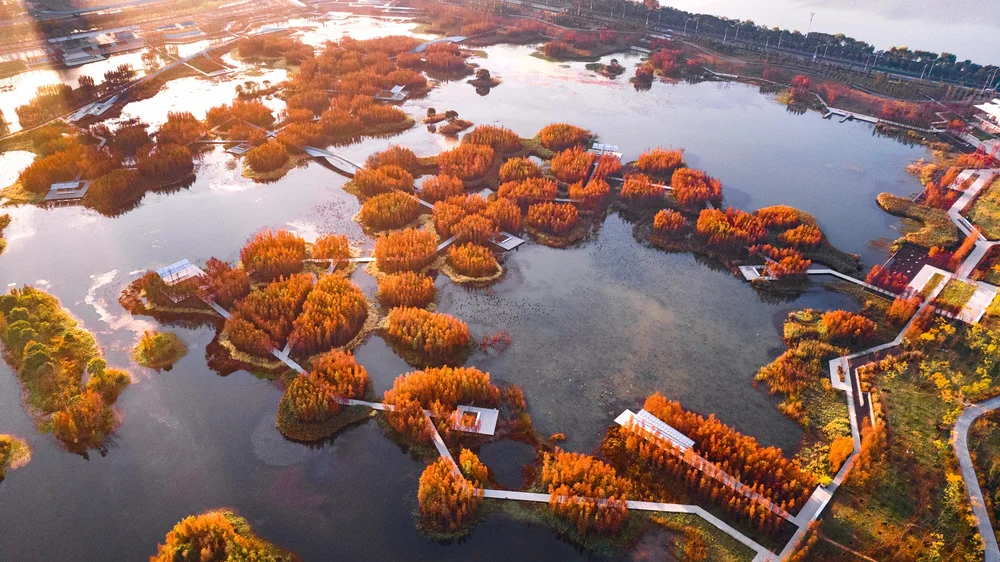In Nanchang, China, Turenscape designs Fish Tail Park, the first floating park in the world

Turenscape has designed Fish Tail Park, the world’s first floating park, in Nanchang, China. The park is located in the flood plain of the Yangtze River, China’s longest and most dangerous river due to its floods. Fish Tail Park gives a new identity to Nanchang’s New District, an area of the city now undergoing redevelopment. The park is home to wildlife that can survive the humidity and flooding caused by the heavy monsoon rains typical of the area. Fish Tail Park regulates stormwater while providing residents with a new place to gather and enjoy nature.
Fish Tail Park: nature in the city
Turenscape’s new park is an urban architecture designed more for nature than for man. In fact, it responds to its laws by adapting and changing its functions according to weather conditions. When the river floods, some areas of the park are completely submerged by water, becoming unreachable.

Fish Tail Park consists of a series of artificial islets of various sizes, some of which are connected by flood-resistant aluminum walkways. In creating the islets, the studio was inspired by the ancient Mesoamerican chinampa technique, relying on small areas of fertile land made artificially in the middle of lakes by combining mud, sediment and decaying vegetation.
A new recreational destination for Nanchang
Fish Tail Park includes playgrounds, beaches, fountains, and bike paths, as well as bridges, platforms, pavilions, and viewing towers offer picturesque routes immersed in the wildest nature. The park’s contemporary design helps to infuse the ancient city with a sense of modernity and progress. Perforated aluminum plate is the main material used for the installed structures, creating an arresting contrast with the natural setting. At the park’s main entrance, a cafeteria is integrated with an overpass connecting Fish Tail Park with the neighboring Aixi Lake Park.
Read In China, Pingtan Book House pays homage to the ancient Dong ethnic group














